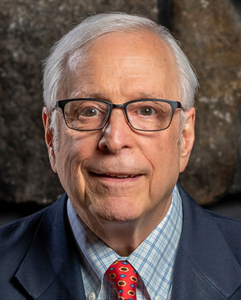Like most people who reside in the greater Boston community, I have been following closely the Catholic Church sexual abuse scandal and the increasing legal and leadership pain that the church faces. Because of the human drama involved and my interest in leadership, I can’t help but be drawn into the adversity that surrounds the leadership of the Archdiocese and, now that it has appointed a new (although interim) leader, offer up some unsolicited views.
But before doing this, let’s put this leadership analysis in context with any other organization, whether it is a business, a non-profit, or a government entity. Organizations are essentially the same and leadership and management of them involves human beings. Yes, the organizational mission statements may be different, but when you step back from it all, the Catholic Church has a service it is providing to its parishioners (customers) and it has priests (employees) who are delivering these services (spiritual, theological, liturgical). It also has a culture that has been shaped over many years by the inner workings of the organization. This culture of cover-up and sexual abuse of young males by priests has been ongoing for some time. Further, the culture refused to treat all stakeholders with the same level of respect. It is now challenged to modify its policies and beliefs in response to the demand by society that priests obey the law. The separation of church and state may be good for running the government, but it doesn’t give the church the right to disobey the law.
It does not serve any purpose for me to explore what should have been done differently. At some point this ought to be done and numerous academics may take this on as a research project. But today, we are where we are and we should focus on where we go from here. The Cardinal has resigned and new leadership is being placed into service. This organization is in crisis and needs strong leadership to rebuild its trust among the various stakeholders. The Most Reverend Richard G Lennon, a regional bishop, has been elevated to Apostolic Administrator until appointment of a new Archbishop of Boston. The open question is whether he is a placeholder until a thorough appointment process is carried out or will he be given an opportunity to begin the “turnaround?” No matter what, he will be challenged to show results in this process of modifying the organization. What should he do?
Academic experts who study when new leaders take charge argue there are specific strategies to employ and traps to steer clear of. Lennon wants to avoid isolation from his constituencies. This suggests he needs to be out and among them, showing a profound presence of being actively engaged in all aspects of the turnaround. No one should dispute his faith or the quality of his pastoral care—instead they need to rally around him and support him in his new leadership role. Give him a chance and an opportunity to succeed. He will need all the support he can muster.
As the new leader, Lennon needs to be on top of the issues and, working with the best advice he can seek out, he needs to put together some early wins—wins where all stakeholders profit. This cannot be an “I win, you lose” stance, but one where all Catholics make progress and are triumphant. At some level, it is about servant leadership, serving all the constituencies.
Another widely recognized trap is to take on the new leadership position believing you have all the answers. Organizations need to be brought along slowly and even if you had the solution to the problem, announcing it at the outset could garner a negative reaction. When assuming the reins, it is important to be a good listener and process what others are saying. Allowing others to help you figure out the correct answer is central in the trust building phase of the relationship. It is unreasonable to think that under the current circumstances in the Archdiocese, this trust building will happen quickly. Any new leader, no matter who it is, will have to dig their way out of the abyss of distrust. After all, as the saying goes, God gave us two ears and one mouth and they should be used in the same proportion.
Reverend Lennon should lay the foundation today for future wins in years two and three. The long view must be taken to repair an organization of this size and scope. Any presumption that widespread restoration can be accomplished within the first 90 days is unrealistic and can result in early failure. The new leader needs to be sure that the stakeholders’ expectations are appropriately set and that the organization shows steady progress with short-term accomplishments. If stakeholders’ demands are unrealistic, the leader or leaders need to show respect and clearly articulate the roadmap of the future. They need to paint a vision whereby all can be of the same mind. The vision needs to be linked to core values accepted by all followers.
With an organization of this size that is subject to such public scrutiny, the leadership team needs to build coalitions with a range of constituencies. First and foremost, the lay leadership of the Church has to be recognized, giving them permission to help solve the Church’s problems. Involving the laity will go a long way toward healing and rebuilding the Church’s future. Coalitions will help move issues along and help to build consensus. For those who subscribe to the leadership of the past, there will need to be changes. Individuals cannot always shift their belief systems instantly. An important trap to avoid is staying with the wrong people too long. We have seen that the Church is a closed community and its leaders take care of their own. This is one of the issues they will have to reconcile—breaking into this closed society and dealing with those who are philosophically unaligned.
As we look to the future of the Church, we need to give its new leader(s) space to make the necessary changes—changes that will rebuild trust with all those associated with the institution. This challenge is similar to challenges we, in the business world, face every day.
Now ask yourself… Am I a Leader?

